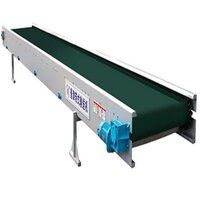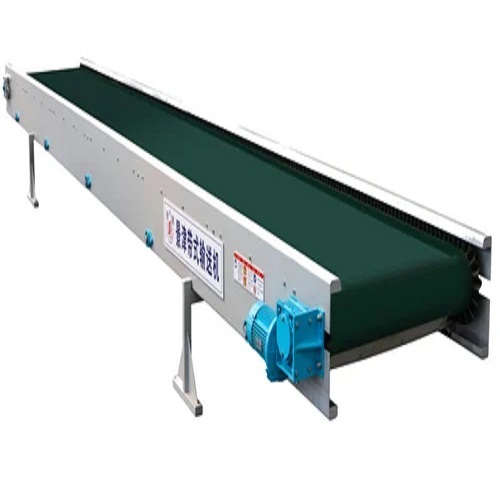Through Conveyor Belt
52000 INR/Unit
Product Details:
- Color Blue
- Size Customized
- Product Type Through Conveyor Belt
- Width 100 - 500 Millimeter (mm)
- Length 20 Meter (m)
- Usage Industrial
- Condition New
- Click to view more
X
Through Conveyor Belt Price
- 52000 INR/Unit
- 1 Unit
Through Conveyor Belt Details
- 100 - 500 Millimeter (mm)
- Electric
- New
- Strong Durable
- 20 Meter (m)
- Industrial
- Blue
- Customized
- 2 - 5 Millimeter (mm)
- Through Conveyor Belt
- 220 Volt (v)
Through Conveyor Belt Trade Information
- 20-25 Unit Per Month
- 1 Week
- Standard
- Asia Australia Africa
- All India
Product Description
A through conveyor belt, also known as a continuous conveyor belt or just a conveyor belt, is a flexible and frequently used material handling system that is meant to transfer goods or commodities from one area to another in an efficient and seamless way. This vital industrial equipment is used in a variety of industries, including manufacturing, mining, agriculture, logistics, and others. Conveyor belts are built as continuous loops with an unending belt composed of sturdy and flexible materials like rubber, PVC, or metal. This loop enables products or materials to be transported continually and uninterruptedly, increasing production.
Features of Through Conveyor Belt
- It is capable of transporting a broad range of products, including lightweight and fragile objects as well as large and bulk materials.
- It is intended to maximize space utilization by letting materials to be carried over long distances while taking up as little floor space as possible.
Technical Specification:
- Load Capacity: AT1200 Stainless Steel Belt
- Dimension(LxWxH): Customized Size
- Durability: Wear Resistant
FAQs : Through Conveyor Belt
How can conveyor belts improve productivity?
Conveyor belts increase productivity by automating material transport. They can reliably and effectively handle massive amounts of material.
Conveyor belts are cost-effective for enterprises in what ways?
Conveyor belts save organizations money in a variety of ways. For starters, they cut labour costs by automating the material handling process, reducing the need for physical involvement. Second, they aid in the reduction of material handling damages, hence lowering waste and associated expenses. Finally, conveyor belts contribute to total cost reductions by boosting operating efficiency.
How can conveyor belts increase worker safety?
Conveyor belts promote workplace safety by removing the need for manual material handling. Manual handling of big or bulk goods might put personnel at risk of occupational injury.
Are Conveyor belts easy to maintain?
Conveyor belts are easy to work with and manage and hence, are considered durable investments.
Tell us about your requirement

Price:
Quantity
Select Unit
- 50
- 100
- 200
- 250
- 500
- 1000+
Additional detail
Mobile number
Email
Other Products in 'Material Handling Systems' category
 |
SIGMA INSTRUMENTATION
All Rights Reserved.(Terms of Use) Developed and Managed by Infocom Network Private Limited. |













